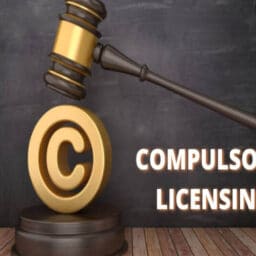Introduction
We all are dependent on various sorts of goods and services in our day-to-day life since time immemorial. Accordingly, we all are consumers in a way and we all expect value for our money. At times we get cheated, as in the product’s quality is not up to the mark or we are sold items for far more monetary value than that it is off. In such cases, most of us do not even know whom to approach or if any redressal is even available to us. Furthermore, we do not even prefer litigation for the injustice suffered by us, as it is expensive as well as the case prolongs. That’s where Consumer Forums comes into the picture, here we need not give large sums of amount for the injustice suffered by us neither does it take much time.
Consumer Protection Act OF 1986[1]
Consumer Protection bill of 1986 was drafted on 5th December 1986 and the said bill became an act on 9th December 1986, the Act came into force on 24th December 1986. Due to the introduction of this act, remedies to consumers were available more easily, lesser expenses to bear, and effective decisions in a lesser amount of time were given. It covered many aspects for the protection of consumers from defective products, expired goods, poor services, and so forth. Also, this law covers up redress only if we buy products or hire services for personal use and doesn’t cover up if products are purchased or services are hired for commercial purposes. These complaints in consumer forums can give consumers only monetary relief and no other form of relief can be provided under this act.
Basic rights of consumers
- Protection of consumers against goods and services which aren’t safe.
- Knowledge about products quality, standards, the value of money, etc. so that producers don’t do unfair trade.
- Products and services are available to consumers at competitive prices.
- Consumers’ interest protection at appropriate consumer forums.
- If any wrong is done to consumers they can seek redressal against the unfair and unjust trade.
Consumer Redressal Forums
The complaint filed by consumers through consumer organizations needs to be backed by copies of bills, invoices, dealership agreements, purchase details, or any other document produced in the purchase of particular good or service provided. For consumers’ grievances, each district at least has one consumer redressal forum. The hierarchy of forums is in the following order, firstly a consumer can file a case in a district forum for claims lesser than rupees 5 lakh, above this comes state commissions where a consumer can file a case for claims between rupees 5 to 20 lakh, and for relief above the amount of 20 lakh can be directly filed with the National Commission.
To file a complaint:
- The consumer needs to file a complaint within 2 years of purchasing a good or using a service.
- The complaint should be in writing and not presented orally.
- The complaint must contain the details of the entity or person against whom such complaint is being filed with relevant documents attached with it.
- The consumer needs to mention the relief he or she is seeking against the complaint filed by him or her and such relief should be reasonable.
- The complainant should safeguard the agreement deal, bills, return memos, or any such documents related to the case, as without these documents it becomes hard to prove whether any wrong has been done to the consumer or not.
- The complaint can be filed in any Indian language as there is no language barrier, though English is mostly preferred.
- There is no necessity to hire a lawyer to file a complaint, the consumer can himself do the needful.
Appeal:
A complainant if not satisfied with the decision of a consumer court can approach a higher court to seek relief in his or her ongoing case by filing an appeal. To file an appeal the said steps need to be followed:
If a consumer is not satisfied by the decision of the District Forum then he can file an appeal with the State Commission within 30 days of the order, at the most extension of 15 more days can be taken. Similarly, if not satisfied by the State Commission order, an appeal can be filed with National Commission within 30 days with an extension of 15 days at the most. The last resort that a consumer has is that of filing an appeal with the Supreme Court if not satisfied with the order of the National Commission.
Penalties:
The consumer courts have the right to enforce their orders and if so happens that the defaulter doesn’t appear in court, in such a case the court can issue warrants, notices, and reminders to appear. Even after the reminders if the defaulter fails to appear then the court can decide the matter in his or her absence. The forum can even sentence the defaulter and impose a fine.
Consumer Protection Act OF 2019[2]
The Consumer Protection Act of 2019 replaced the Consumer Protection Act of 1996. This amended Act holistically protects the rights of consumers as it provides solutions from e-commerce frauds, if any issues are faced in international trade, online payment methods frauds, and so forth. Therefore, we can safely say that this new act looks after the issues of modern society as well and makes the situation of consumers safer and secure.
Establishment of Authority:
It establishes the Central Consumer Protection Authority with wide powers to protect and empower consumers. It has the power to take fine the defaulter in case of unfair trade practices, impose and ban misleading advertisements, discourage the distribution of unsafe goods and services, and so forth.
Consumer Disputes Redressal Commissions:
The Consumer Disputes Redressal Commissions takes complaints of unfair trade practices. Herein, we have District CDRC, State CDRC, and National CDRC. The District CDRC looks into matters ranging up to rupees 1 crore, The State CDRC looks into matters ranging between rupees 1 crore to rupees 10 crores, The National CDRC looks into matters ranging above rupees 10 crores.
Addresses modern age issues:
Every e-commerce entity has to mandatorily follow the required guidelines laid down in the law. If they meet the rules of payment, delivery, order, warranty, etc. then only they can carry on the entity, or else heavy legal proceedings will follow the entity.
Punishment for Misleading Advertisement:
The law defines ‘misleading advertisements’ and for the same, it can imprison and fine the defaulter. Even the celebrities need to be cautious about the claims made in the advertisement because if any are found to be untrue and false it can cost a lot to them.
Conclusion
Currently, the law covers provisions such as e-commerce giants, manufacturer responsibilities, and more, making it easier to look after the safety of consumers at large. In summary, adding new provisions has proved to be an appreciable tool for broadening the scope of the law and empowering consumers. It protects the rights of the consumers, makes manufactures and companies answerable to the public. Therefore, this new law is a success for the whole country and the right implementation of these laws will make India a safer country for all of us.
Author(s) Name: Parul Thadani & Anushka Mishra (Fergusson College, Savitribai Phule Pune University)
[1] Consumer Protection Act, 1986.
[2] Consumer Protection Act, 2019.
















